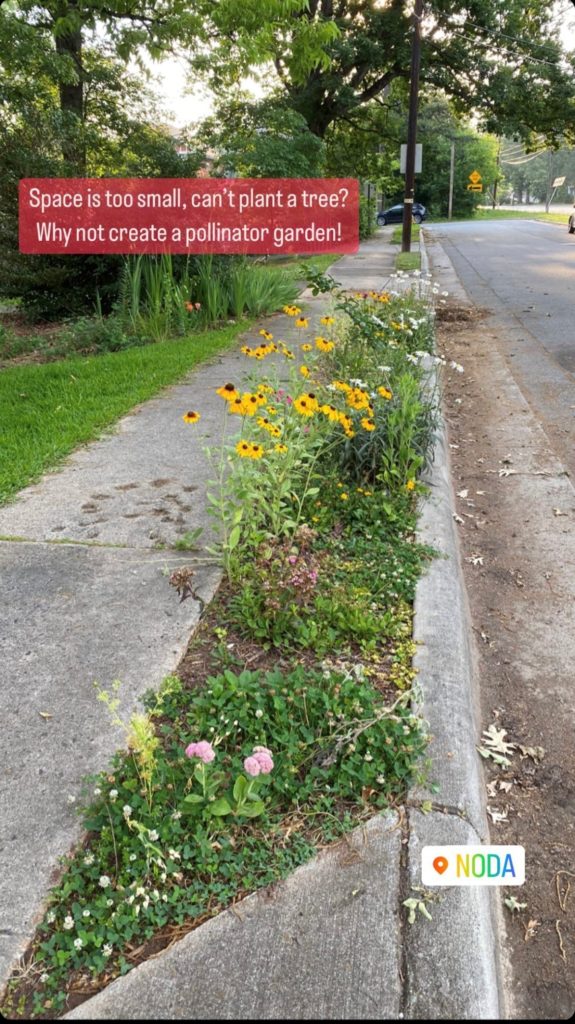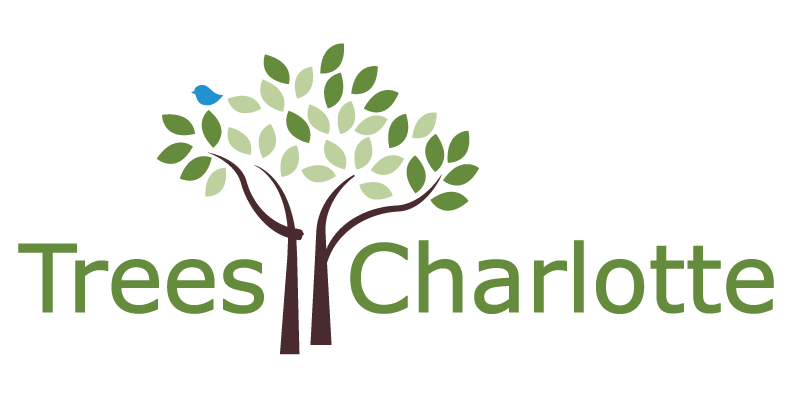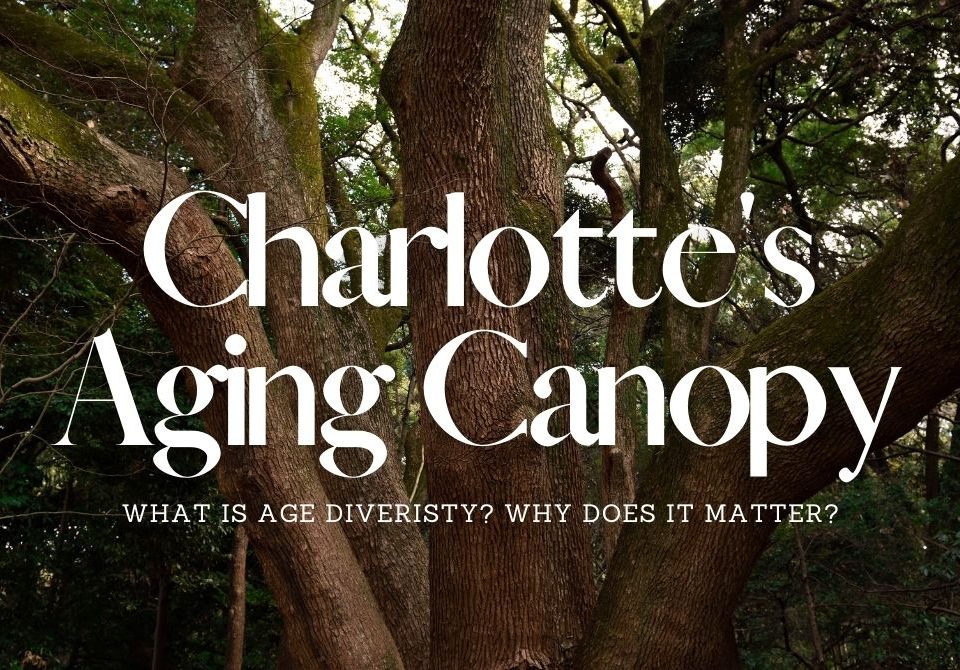How to Create a Pollinator Garden that Supports Trees

By: Darien Aassar
If you can’t plant trees (maybe you live in an apartment, or your community already has an abundance of trees, or you have a small space that can’t fit a tree), a great way to support Charlotte’s tree canopy is to create a pollinator garden. Read on to learn more about what pollinator gardens are and how you can make one yourself.
Basics on Pollinator Gardens

Pollinator gardens are home to native plants that attract pollinators. Pollinator gardens help fruiting and flowering trees reproduce by providing a space for pollinators to forage. By creating havens for pollinators that support flowering and fruiting plants’ reproduction, pollinator gardens can also increase biodiversity and thus create more robust ecosystems for our trees to thrive in. To learn more about the relationship between pollinators and trees, click here.
Pollinator gardens are the ideal choice for anyone who has a little extra space with some sunlight. Pollinator gardens can be planted in a sunny patch in your yard, but, if you don’t have a yard, you can still create a vibrant pollinator garden. Homegrown National Park recommends using whatever outdoor space you may have (e.g. a balcony) and planting native plants in large containers to allow space for the plants’ roots. Click here to see a list of plants native to North Carolina that can be used in container gardens. Because pollinator gardens require much less upkeep than turf grass—they don’t need as much watering, fertilizer, or pesticides—they’re easy to maintain and are a relatively hassle-free way to give back to the environment.
You can buy seeds or small plants to begin your pollinator garden. Small plants allow you to start your garden right away, while seeds will have to be dispersed in the fall or winter (U.S. Fish and Wildlife Service).
Tips for a Successful Pollinator Garden
- Use native plants. Native pollinators have evolved to feed on native plants; this means that the best food source for native pollinators is native plants rather than non-native plants (USDA Forest Service). Pollinators may not be able to feed on non-native plants or get as many nutrients from them as they could from native plants (USDA Forest Service). Native pollinator plants to North Carolina include the Black-Eyed Susan, the Common Milkweed, and the Flat-Topped Aster—for further reading on native pollinator plants to North Carolina, check out this resource from the North Carolina Wildlife Federation and this resource from Homegrown National Park.
- Do not use pesticides. Pesticides may kill pollinators, defeating the purpose of a pollinator garden. If you must use pesticides, it’s best to use gentle pesticides with a minimal amount of toxic materials and to apply them at night when flowers aren’t blooming and pollinators aren’t foraging (National Wildlife Federation, USDA Forest Service).
- Plant in big patches or clumps. This encourages pollinators to forage (USDA Forest Service, National Wildlife Federation).
- Choose plants that bloom at different times of year. This ensures that your pollinator garden is useful to pollinators for as long as possible—if you choose wisely, your pollinator garden could be in bloom from early spring all the way to late fall (U.S. Fish and Wildlife Service, USDA Forest Service).
- Create ideal conditions. Many pollinators prefer to be in full sunlight, so it’s a good idea to set up your pollinator garden in a sunny area using plants that require full or partial sun. Do your research to make sure you’re using the ideal soil type and consider adding compost to your soil so that your garden can thrive in nutrient-rich soil (U.S. Fish and Wildlife Service).
- Care for your garden. Water and weed your garden as needed (U.S. Fish and Wildlife Service). Once your pollinator garden is established, you’ll want to mow (or prune down for container gardens) in the fall after the first frost to disperse seeds and keep down brush. It’s suggested to use a high mower setting and to leave the cuttings in the garden for winter mulch. Then wait until the spring to see your garden bloom back to life (American Meadows)!
Sources:
https://www.fws.gov/story/how-build-pollinator-garden
https://www.fs.usda.gov/managing-land/wildflowers/pollinators/gardening
https://www.nwf.org/garden-for-wildlife/about/national-initiatives/plant-for-pollinators




